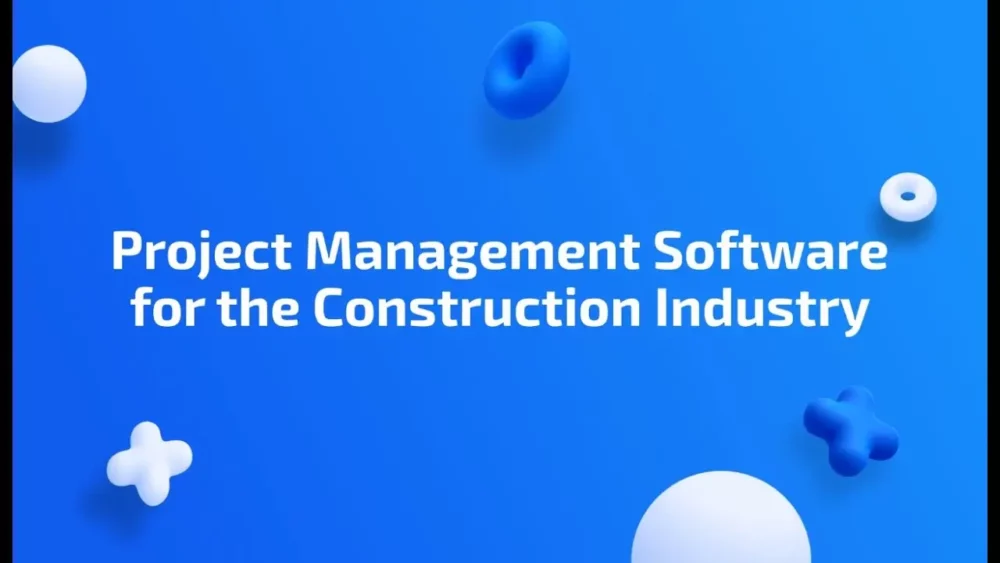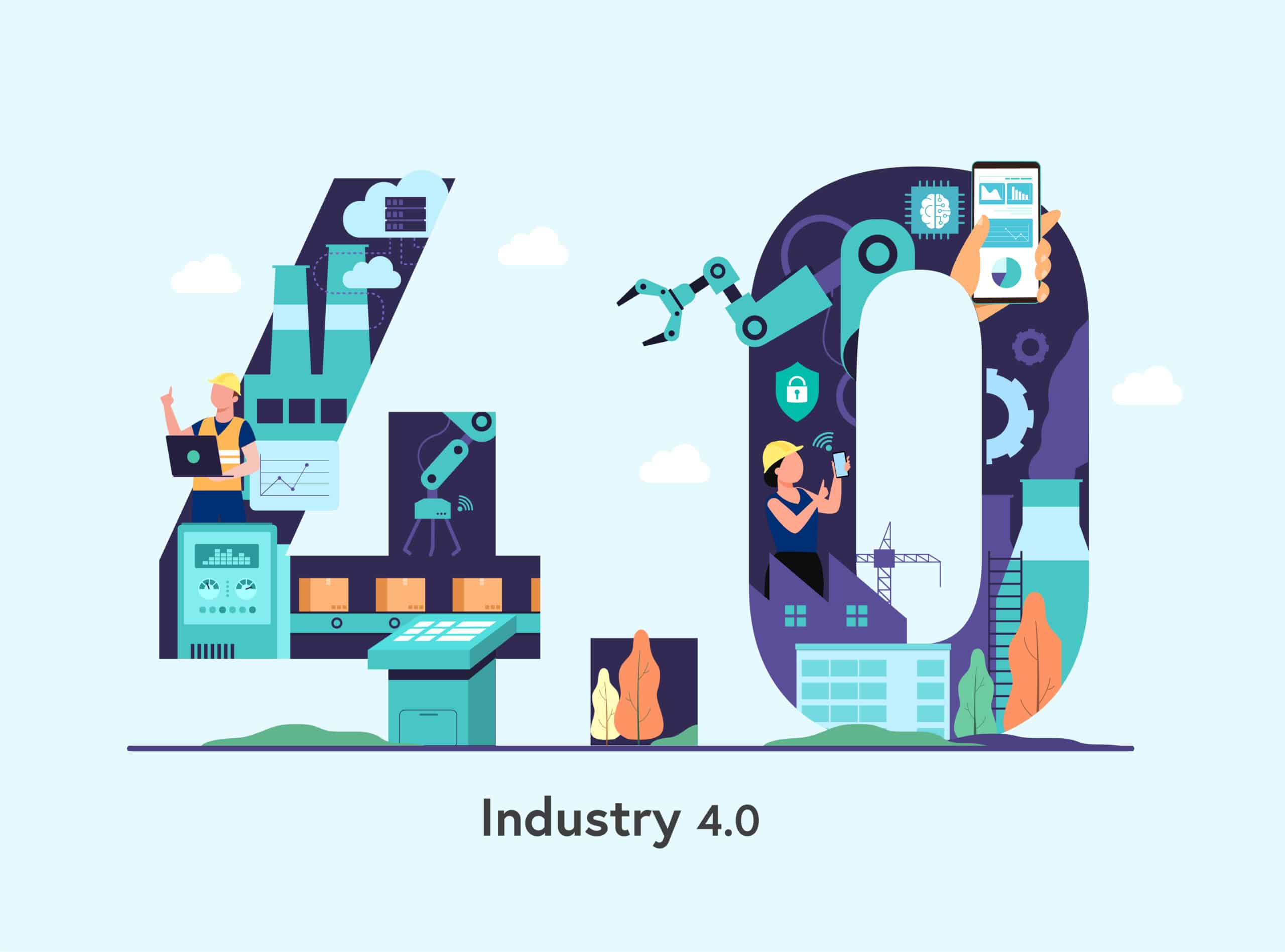In the fast-paced world of construction, managing projects efficiently and effectively is key to success. With complex timelines, numerous stakeholders, and intricate tasks, project management software has emerged as a game-changer in the construction industry. But what exactly is project management software, and why is it crucial for construction projects?

Project management software in the construction industry refers to specialized digital tools designed to streamline and centralize project planning, execution, and monitoring. It acts as a digital hub where project managers, contractors, architects, and other stakeholders can collaborate, communicate, and coordinate their efforts seamlessly.
So, why should you consider utilizing project management software in your construction projects? The answer lies in the numerous benefits it brings to the table. Firstly, project management software enhances overall project organization and planning. By providing a centralized platform, it enables easy access to project data, including schedules, tasks, and documents. This eliminates the need for manual paperwork, reducing errors and enhancing efficiency.
Moreover, project management software facilitates communication and collaboration among team members. With features like real-time messaging, file sharing, and virtual meetings, it ensures that everyone is on the same page, fostering effective teamwork and minimizing miscommunication.
Another significant advantage of project management software is its ability to improve resource allocation and tracking. By digitizing resource management, it becomes easier to assign tasks, track progress, and allocate resources efficiently. This helps optimize workflow, prevent delays, and ensure that projects stay on track.
Additionally, project management software provides robust reporting and analytics capabilities. It generates insightful reports and metrics, offering valuable insights into project performance, resource utilization, and budget management. Armed with this data, project managers can make data-driven decisions, identify bottlenecks, and implement corrective measures promptly.
In conclusion, project management software has become a vital tool in the construction industry, revolutionizing project planning, execution, and collaboration. Its benefits include improved organization, enhanced communication, streamlined resource allocation, and powerful reporting. In the following sections, we will delve deeper into the key features, advantages, and factors to consider when choosing project management software specifically tailored for the construction industry. So, buckle up and get ready to explore the world of construction project management software, where success is just a click away.
Key Features of Project Management Software in the Construction Industry
Task and Schedule Management
One of the primary features of project management software in the construction industry is its robust task and schedule management capabilities. This feature allows project managers to create and assign tasks to team members, set deadlines, and track progress in real-time. With a clear overview of project timelines and dependencies, construction teams can ensure that tasks are completed on time, minimizing delays and maximizing productivity.
Document Control and Collaboration
Effective document control and collaboration are crucial in construction projects, where multiple parties need access to drawings, plans, permits, and other project-related documents. Project management software provides a secure and centralized repository for storing and sharing documents, ensuring that the latest versions are accessible to all stakeholders. This eliminates the hassle of managing multiple copies and reduces the risk of miscommunication or outdated information.
Resource Allocation and Tracking
Construction projects require careful allocation and tracking of resources, including labor, equipment, and materials. With project management software, project managers can easily assign resources to specific tasks, track their availability, and monitor their utilization. This allows for efficient resource allocation, ensuring that the right resources are allocated to the right tasks at the right time. By optimizing resource usage, construction teams can reduce costs and avoid unnecessary delays.
Communication and Team Collaboration
Smooth communication and effective collaboration are vital for successful construction projects. Project management software provides various communication tools, such as instant messaging, discussion boards, and virtual meeting rooms, enabling seamless collaboration among team members. This fosters better coordination, problem-solving, and decision-making, ultimately leading to improved project outcomes.
Budgeting and Cost Control
Managing project budgets and controlling costs are critical aspects of construction projects. Project management software offers features to create and monitor budgets, track expenses, and compare actual costs against estimates. This helps project managers identify potential cost overruns, make informed decisions, and implement measures to stay within budget.
Reporting and Analytics
Project management software provides powerful reporting and analytics capabilities, allowing project managers to generate comprehensive reports on various aspects of the project. These reports provide insights into project progress, resource utilization, budget performance, and other key metrics. By analyzing these reports, project managers can identify trends, spot areas of improvement, and make data-driven decisions to ensure project success.
In the next section, we will explore the advantages of using project management software in the construction industry. Get ready to discover how these features translate into tangible benefits for your construction projects.
Advantages of Using Project Management Software in the Construction Industry
Improved Project Planning and Organization

In the construction industry, precise project planning and organization are crucial for successful project execution. Project management software offers a range of features that streamline these processes. From creating detailed project schedules and assigning tasks to setting milestones and dependencies, the software helps project managers stay organized and on track. With a clear overview of project timelines and progress, potential bottlenecks can be identified and addressed proactively, ensuring projects are completed within deadlines.
Enhanced Communication and Collaboration Among Team Members
Effective communication and collaboration are vital for the smooth execution of construction projects. Project management software facilitates seamless communication among team members, regardless of their physical locations. Real-time messaging, file sharing, and collaborative document editing features enable instant and efficient communication. Team members can discuss project details, share updates, and resolve issues promptly, fostering a collaborative environment that promotes productivity and minimizes misunderstandings.
Streamlined Document Management and Version Control
Construction projects involve a multitude of documents, including blueprints, contracts, permits, and reports. Managing these documents manually can be time-consuming and prone to errors. Project management software streamlines document management by providing a centralized repository where all project-related documents can be stored, organized, and accessed easily. Additionally, version control features ensure that team members are working with the latest document versions, eliminating confusion and reducing the risk of errors caused by outdated information.
Efficient Resource Allocation and Tracking
Efficient resource allocation is crucial for keeping projects on schedule and within budget. Project management software simplifies resource allocation by providing a clear overview of available resources, such as labor, equipment, and materials. It allows project managers to assign resources to specific tasks, track their usage, and identify potential resource conflicts or shortages. By optimizing resource allocation, construction projects can avoid delays, prevent unnecessary costs, and ensure that resources are utilized effectively.
Real-Time Project Monitoring and Reporting
Project management software provides real-time visibility into project progress, enabling project managers to monitor key metrics and track milestones. With interactive dashboards and reports, project managers can quickly identify areas that require attention and take proactive measures to address potential issues. Real-time monitoring allows for timely decision-making, ensuring projects stay on track and enabling stakeholders to be informed about project status and progress.
Cost and Time Savings
By leveraging the benefits mentioned above, project management software ultimately leads to significant cost and time savings. Enhanced organization, streamlined communication, efficient resource allocation, and real-time monitoring all contribute to improved project efficiency and reduced project delays. With fewer costly setbacks, projects can be completed within budget and on time, resulting in increased profitability and client satisfaction.
In the next section, we will explore the key factors to consider when choosing project management software specifically tailored for the construction industry. Stay tuned to discover the must-have features and considerations that will help you make the right choice for your construction projects.
Factors to Consider When Choosing Project Management Software for the Construction Industry
Scalability and Flexibility
When selecting project management software for the construction industry, scalability and flexibility should be at the forefront of your decision-making process. As projects evolve and grow, your software should be able to accommodate the changing needs and scale accordingly. Ensure that the software can handle an increasing number of users, projects, and data without compromising performance. Additionally, look for features that allow customization to adapt to your specific project requirements and workflows.
Integration Capabilities with Other Tools and Systems
Efficient project management often requires the use of multiple tools and systems. Therefore, it is essential to choose software that offers seamless integration with other commonly used applications in the construction industry. Integration capabilities enable smooth data transfer, eliminate the need for manual data entry, and enhance overall productivity. Consider whether the software integrates with tools such as accounting software, design software, communication platforms, and document management systems.
User-Friendliness and Ease of Adoption
The success of project management software depends on its adoption by the construction team. Opt for software that is user-friendly and intuitive, minimizing the learning curve for your team members. A well-designed interface and straightforward navigation will encourage widespread acceptance and utilization. Look for features such as drag-and-drop functionality, easy task assignment, and clear visualization of project timelines and progress.
Mobile Accessibility
Construction projects often require on-site collaboration and real-time updates. Therefore, choosing project management software with mobile accessibility is crucial. Mobile apps or responsive web interfaces allow team members to access project information, update tasks, and communicate while on the go. This flexibility enhances productivity, ensures timely coordination, and minimizes delays caused by communication gaps.
Security and Data Protection Measures
Construction projects involve sensitive and confidential information, including financial data, project plans, and client details. Therefore, robust security and data protection measures should be a top priority when selecting project management software. Look for software that offers encrypted data storage, user access controls, and regular security updates. Compliance with industry standards and regulations, such as GDPR, further ensures the safety of your data.

Customer Support and Training Options
Even the most user-friendly software may require some assistance during implementation or daily use. Consider the level of customer support and training options offered by the software provider. Responsive customer support, comprehensive documentation, video tutorials, and training sessions can significantly contribute to a smooth onboarding process and ongoing support for your team.
In the next section, we will explore some of the popular project management software options available specifically for the construction industry. So, stay tuned and discover the software that aligns perfectly with your construction project management needs.
Popular Project Management Software for the Construction Industry
When it comes to project management software for the construction industry, several top players have emerged, each offering unique features and benefits. Let’s take a closer look at some popular options and their key attributes:
Software A: Features, Benefits, and Pricing
Software A has gained recognition for its comprehensive range of features tailored specifically for construction projects. With its intuitive interface, it allows seamless task and schedule management, ensuring that all project milestones are met without a hitch. This software also excels in document control and collaboration, enabling real-time collaboration on drawings, blueprints, and other project-related documents.
Moreover, Software A offers robust resource allocation and tracking capabilities. It allows project managers to efficiently assign resources, track their availability, and monitor their progress throughout the project lifecycle. This ensures optimal resource utilization and helps prevent any potential bottlenecks.
Additionally, Software A provides excellent communication and team collaboration tools. It offers instant messaging, video conferencing, and document sharing features, allowing team members to stay connected and work together seamlessly. Furthermore, its budgeting and cost control features help monitor project expenses, ensuring that projects stay within budget.
Pricing for Software A varies based on the features and number of users required. They offer flexible plans that cater to the needs of small to large construction firms, making it an attractive option for businesses of all sizes.
Software B: Features, Benefits, and Pricing
Software B stands out for its user-friendly interface and powerful capabilities. It offers a wide range of features, including task management, document control, and resource allocation. With its intuitive design, even less tech-savvy users can quickly adapt to its functionalities.
One of the standout features of Software B is its robust reporting and analytics capabilities. It provides detailed insights into project progress, resource utilization, and budget tracking. These analytics help project managers make informed decisions, identify potential risks, and take proactive measures to ensure project success.
Furthermore, Software B excels in mobile accessibility, allowing users to access project data and collaborate on the go. Its seamless mobile integration ensures that you can stay connected to your projects, even when you’re away from your desk.
Pricing for Software B is competitive and caters to both small and large construction companies. They offer flexible pricing plans based on the number of users and project complexity, making it a scalable option for businesses at any stage.
Software C: Features, Benefits, and Pricing
Software C has garnered attention for its robust feature set and versatile capabilities. It offers a comprehensive suite of tools, including task management, document control, resource allocation, and communication features. Its user-friendly interface makes it easy for teams to adapt and collaborate seamlessly.
One notable feature of Software C is its integration capabilities. It seamlessly integrates with other software and systems commonly used in the construction industry, such as accounting software and Building Information Modeling (BIM) tools. This integration streamlines workflows and eliminates duplicate data entry, saving time and reducing errors.
Moreover, Software C provides advanced security measures to safeguard project data and ensure confidentiality. It offers role-based access control, data encryption, and regular backups, giving you peace of mind that your sensitive information is protected.
Pricing for Software C is flexible and caters to businesses of all sizes. They offer different pricing tiers, allowing you to choose the plan that best fits your project management needs.
In the following sections, we will explore the advantages of using project management software in the construction industry and delve into the factors to consider when selecting the right software for your projects. Let’s continue our journey toward project management excellence in the construction realm.
Conclusion
In the fast-paced and demanding construction industry, utilizing project management software is no longer a luxury but a necessity. The benefits of integrating this technology into construction projects are immense, allowing for enhanced organization, streamlined communication, efficient resource allocation, and data-driven decision-making.
By adopting project management software specifically designed for the construction industry, you can experience a multitude of advantages. Improved project planning and organization become effortless as you centralize schedules, tasks, and documents in one digital hub. This eliminates manual paperwork, reduces errors, and boosts overall efficiency.
Effective communication and collaboration among team members are vital for project success. With project management software, you can facilitate seamless communication through real-time messaging, file sharing, and virtual meetings. Everyone involved in the project can stay connected, ensuring that all stakeholders are aligned and working towards a common goal.
Resource allocation and tracking become a breeze when utilizing project management software. Assigning tasks, monitoring progress, and optimizing resource utilization are made simple, ensuring projects stay on track and within budget. This efficiency helps eliminate bottlenecks and minimize delays, leading to successful project completion.

Project management software also offers powerful reporting and analytics capabilities. Through insightful reports and metrics, you can gain valuable insights into project performance, resource utilization, and budget management. Armed with this data, you can make informed decisions, identify areas for improvement, and implement necessary adjustments promptly.
When selecting project management software for the construction industry, consider factors such as scalability, integration capabilities, user-friendliness, mobile accessibility, and data security. Choose a solution that aligns with your specific project management needs and supports your team’s productivity and collaboration.
In conclusion, project management software has revolutionized the construction industry by streamlining project management processes, enhancing communication, and empowering data-driven decision-making. By embracing the power of technology, you can position your construction projects for success, delivering exceptional results and exceeding client expectations.
industry.vdict.pro offers a range of project management software options tailored for the construction industry. Explore our offerings and unlock the full potential of your construction projects today.





